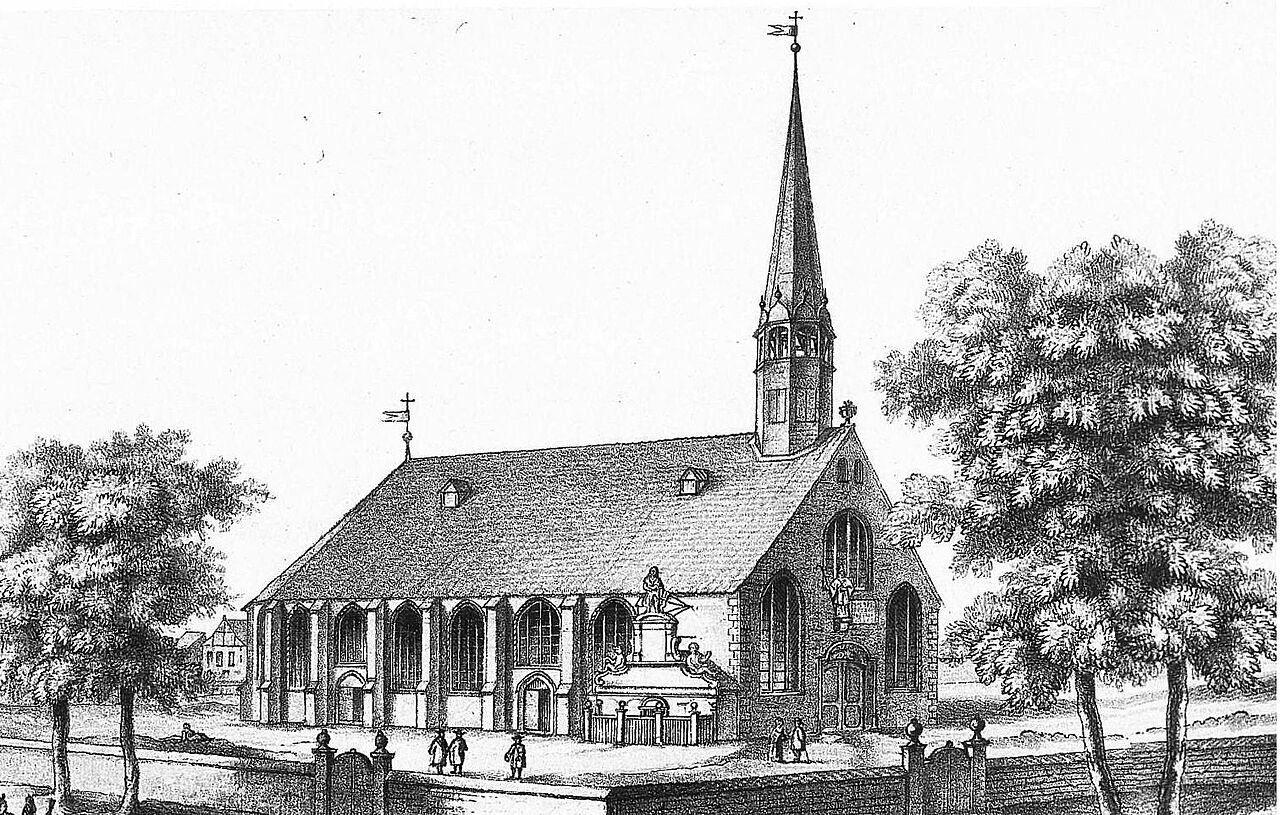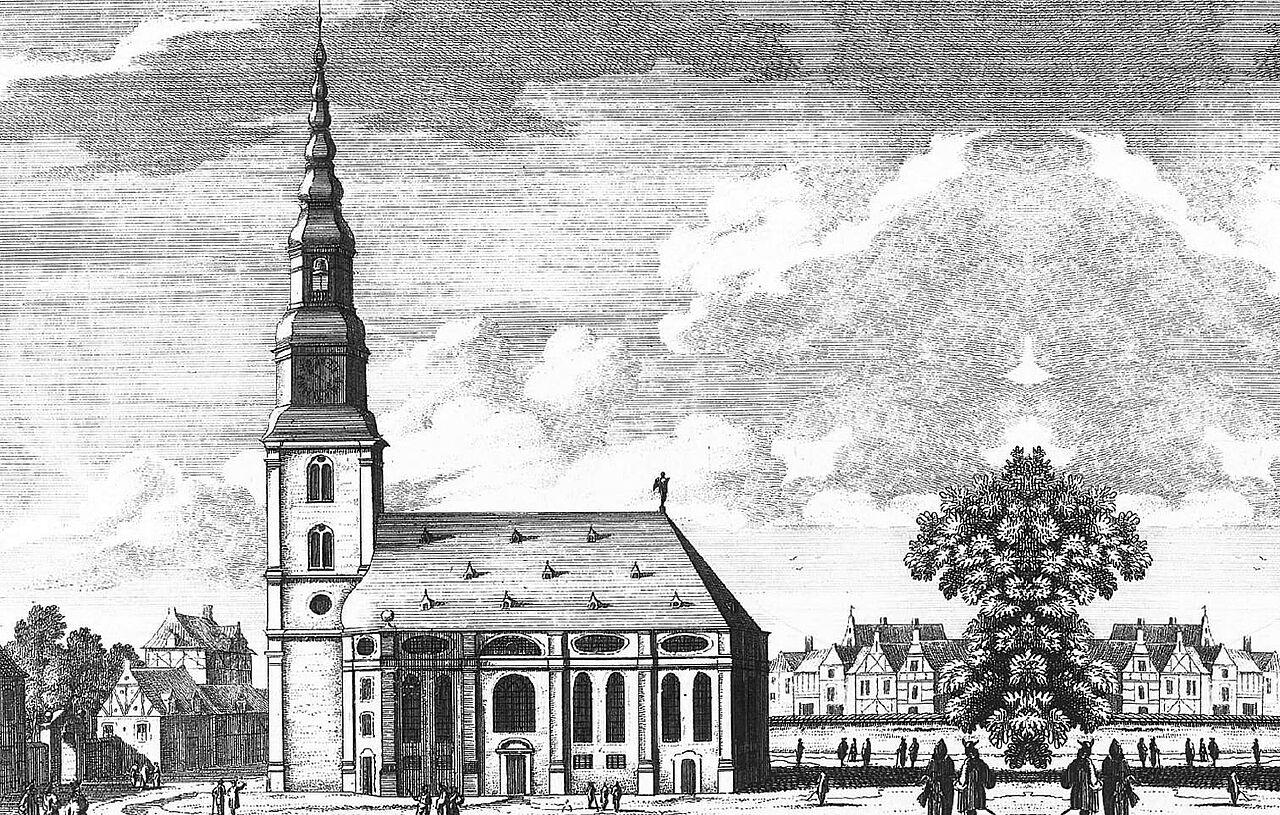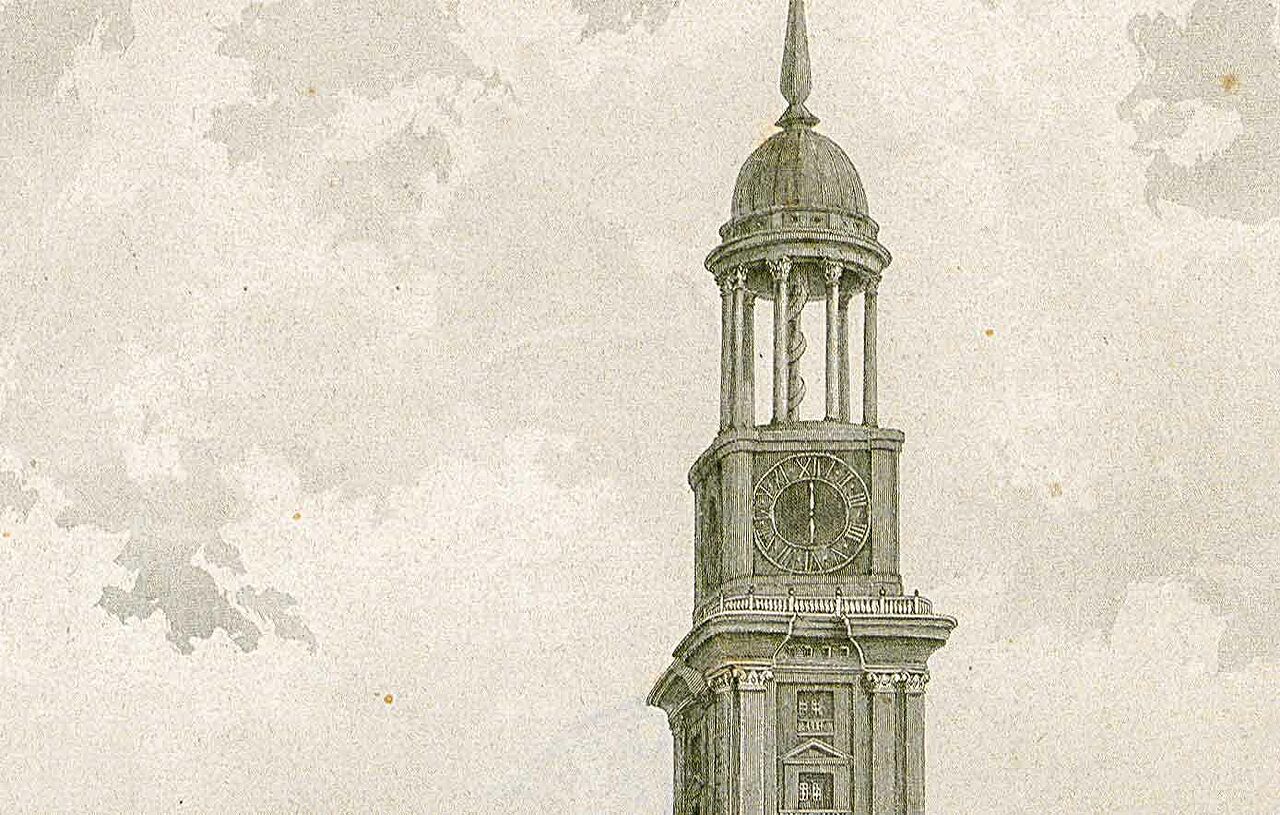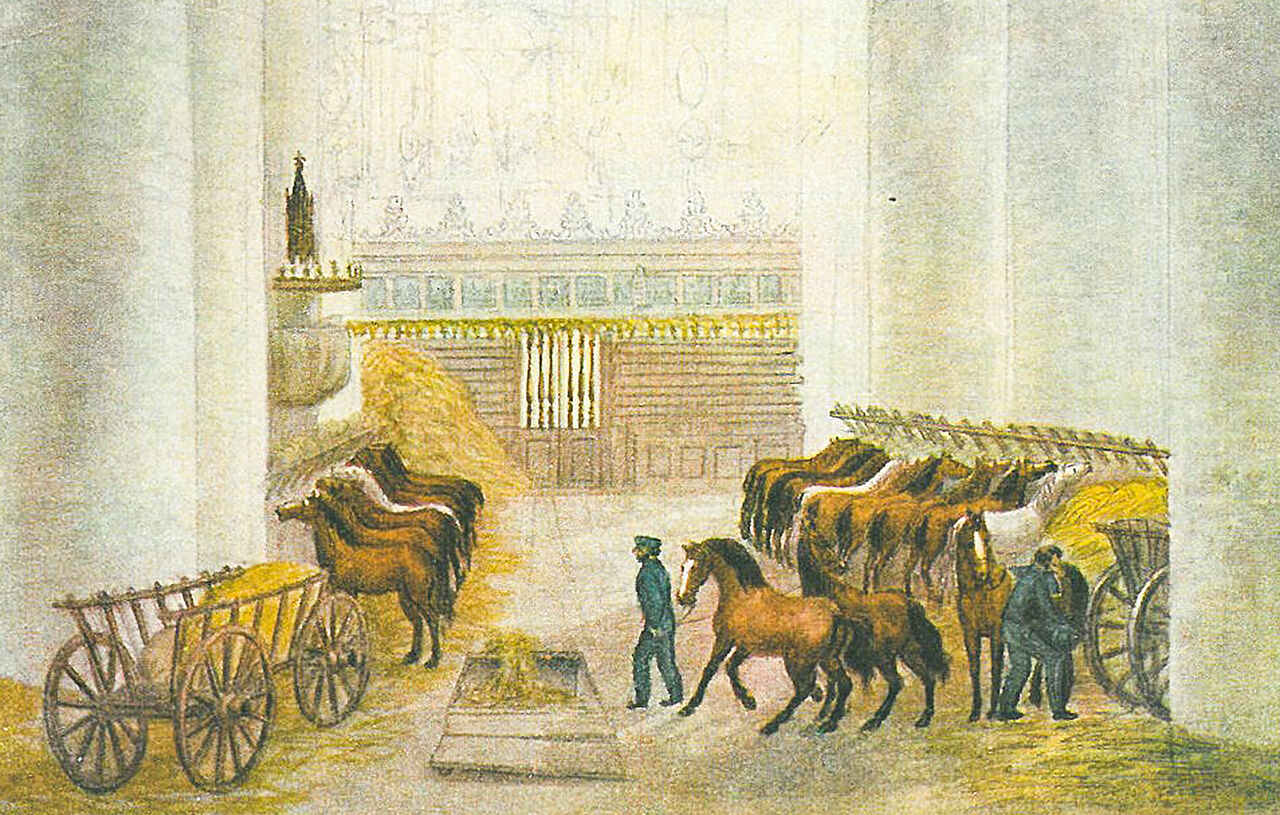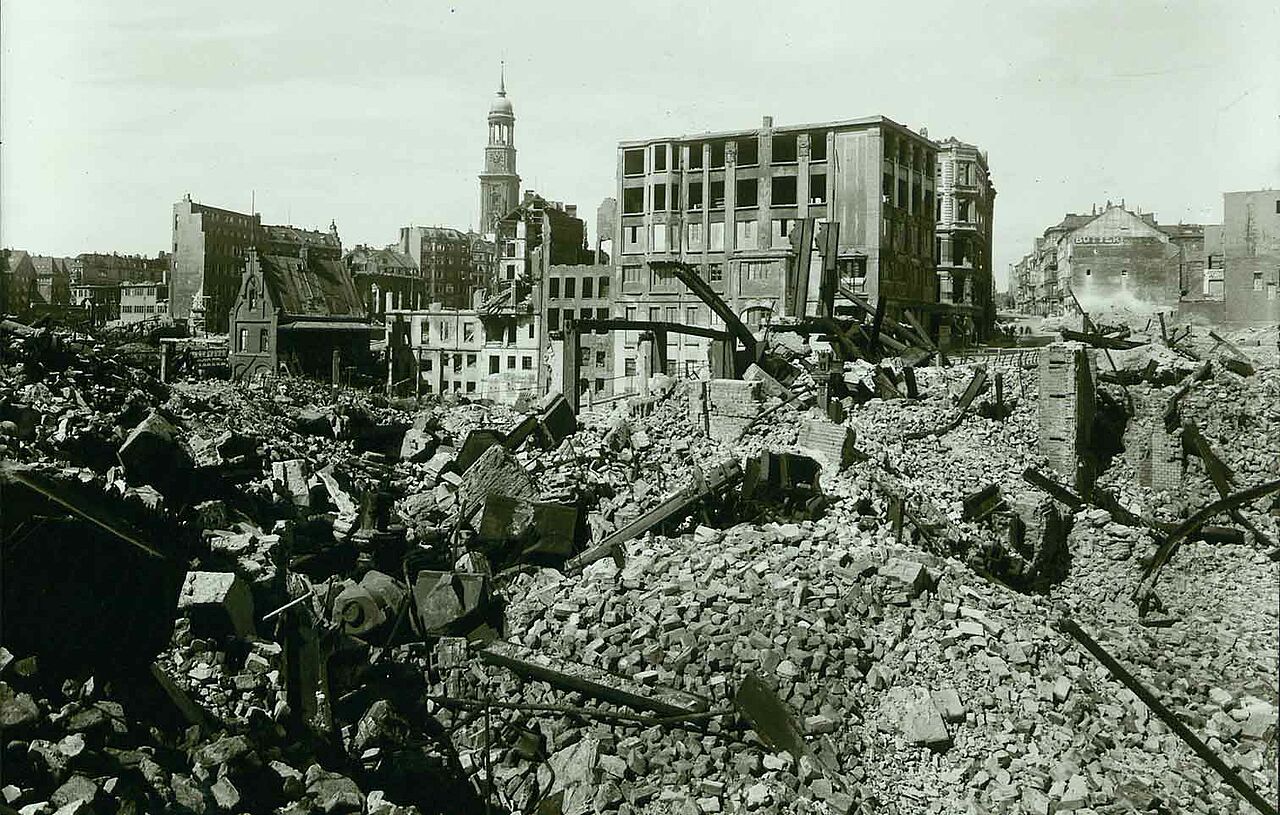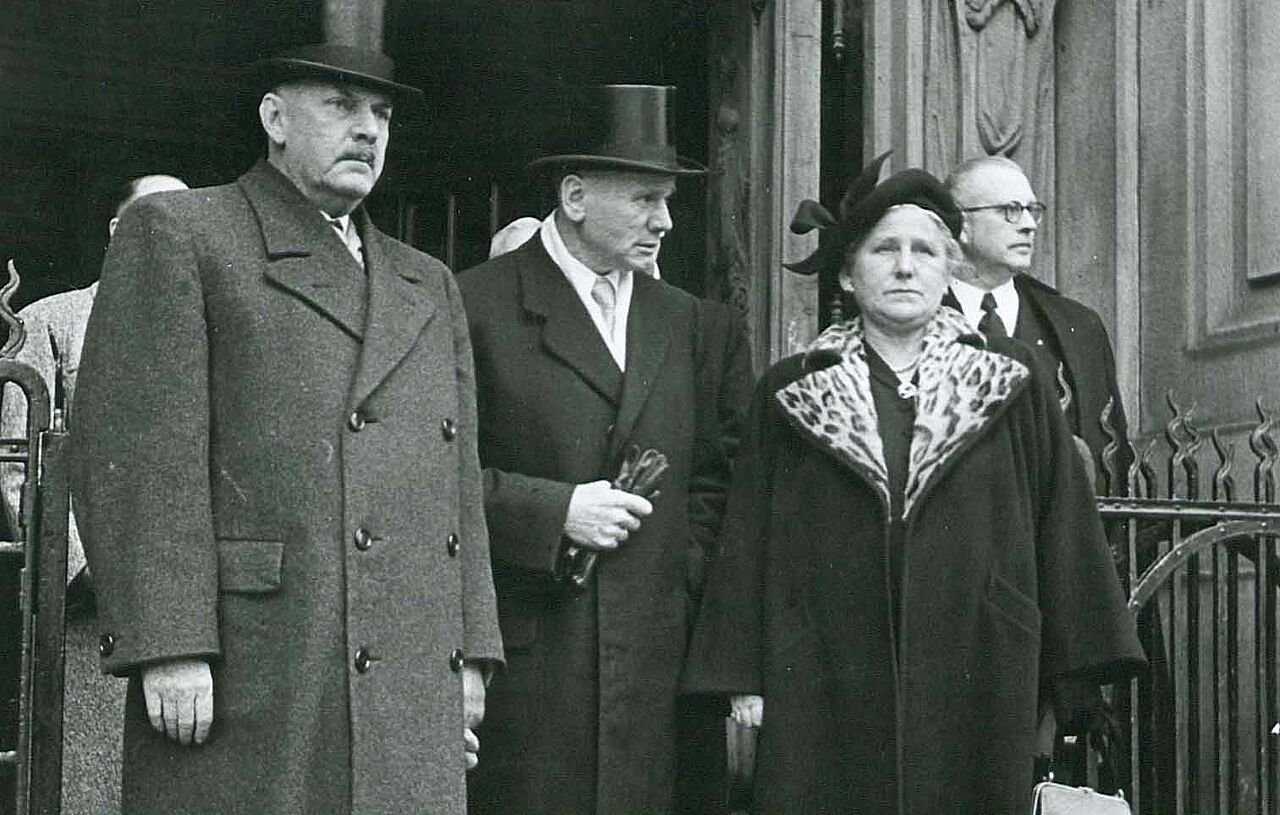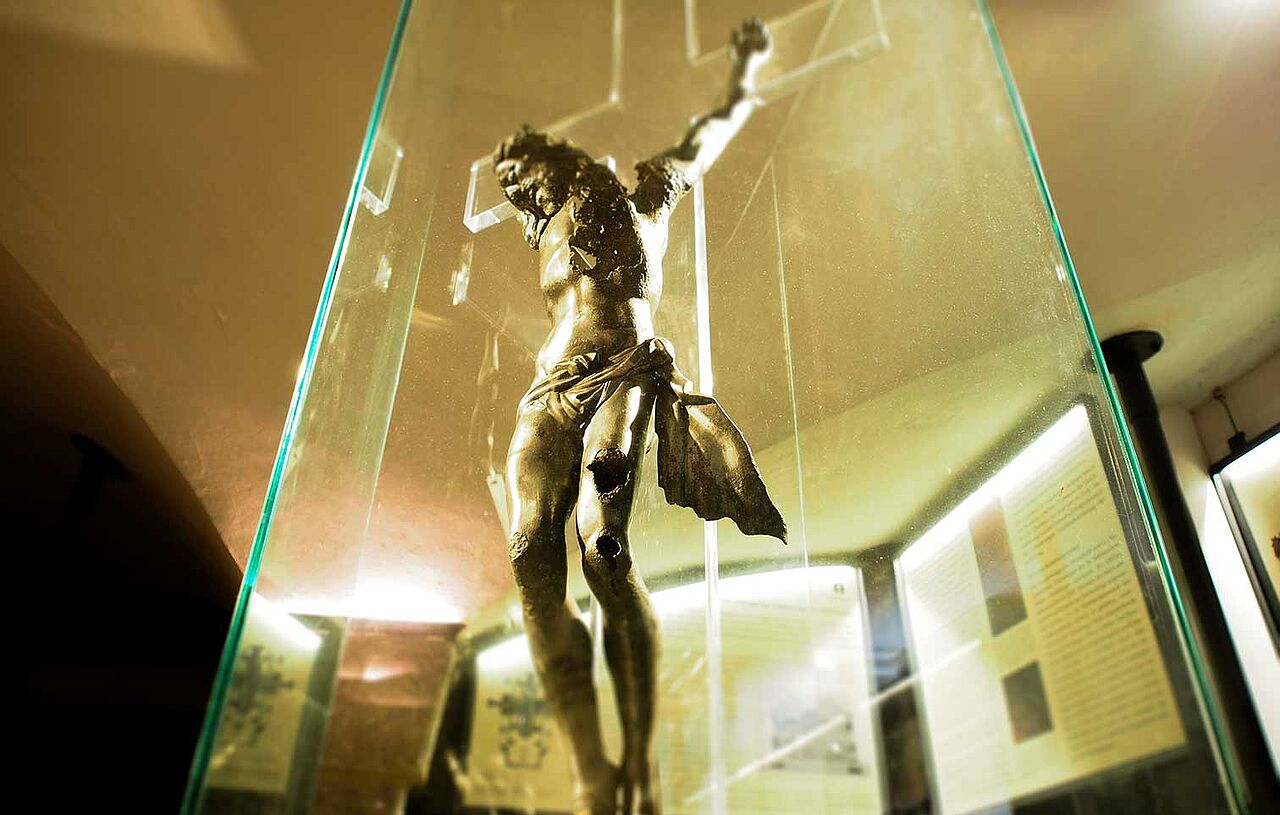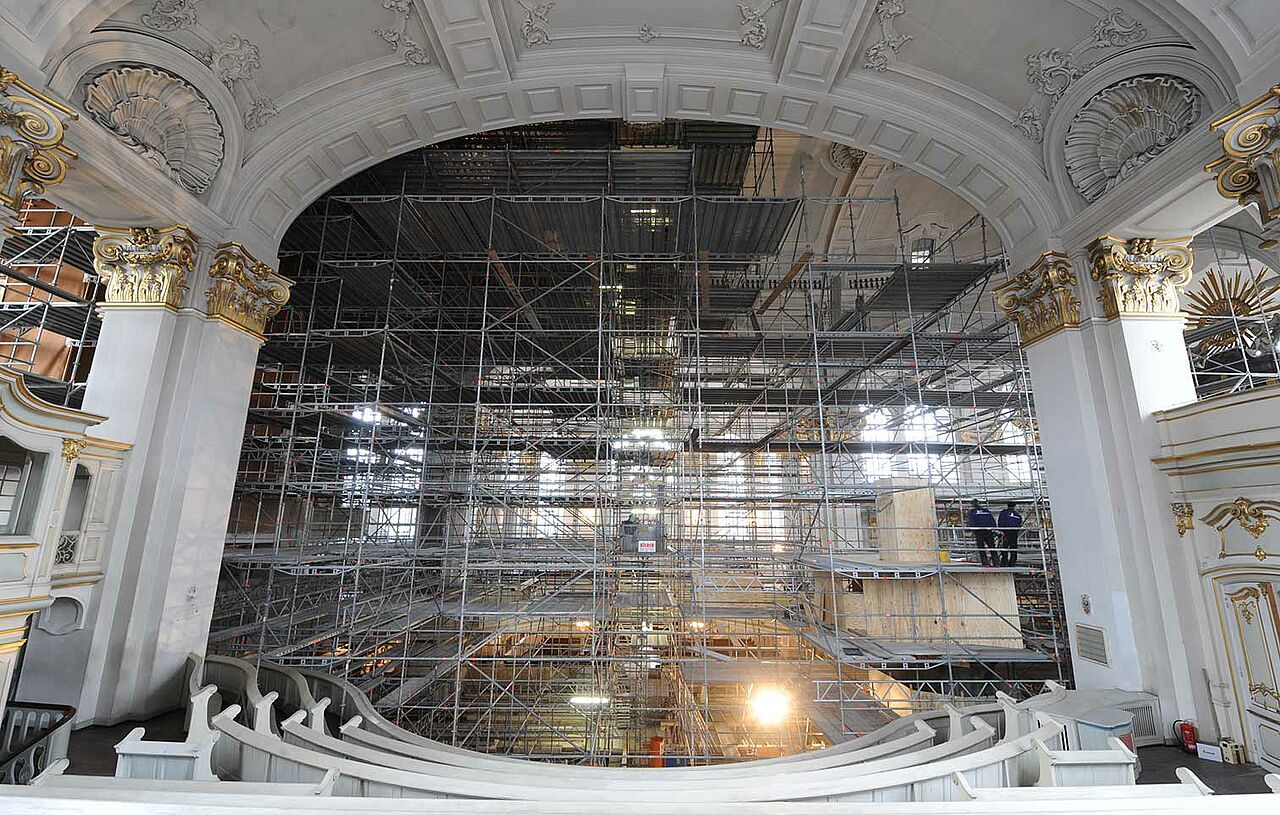St Michael's history
St. Michael’s is the most important baroque church in northern Germany. With its unmistakable copper roof, the church tower is Hamburg’s iconic landmark. Why not discover St. Michael’s for yourself? This unique church is well worth a visit.
Church history
Ca. 1600: First St. Michael’s chapel on the grounds of the cemetery outside the city walls. In 1606, the chapel was expanded to create a small St. Michael’s church.
1647–1661: In the final year of the Thirty Years’ War, architects Corbinus and Marquard began construction of the first large-scale St. Michael’s church, 200 metres west of the small church. It was located in Neustadt, inside the expanded city limits.
1685: The church became the fifth main church in Hamburg, alongside St. Peter’s, St. Jacob’s, St. Nicholas’s and St. Catharine’s.
1750: The first large-scale St. Michael’s church was struck by lightning and burnt down.
1750–1762: Architects Prey and Sonnin built the second large-scale St. Michael’s church in baroque style.
1777–1786: Sonnin constructed the tower entirely out of wood with the signature copper roof.
1906: Work with a blowlamp in the tower caused a devastating fire and the church was completely destroyed.
1906–1912: Construction of the third large-scale St. Michael’s church. The old plans were used, this time utilising steel and concrete inside the remaining walls. Only the baptism font and offering box remained from 1763.
1943–1945: St. Michael’s was heavily damaged by the bombing strikes on Hamburg.
1947–1952: The damage caused by war was repaired.
1952: Reconsecration of the church. Only the baptism font and offering box remained from 1763.
1983–1996: Complete restoration of the tower.
2007: Crypt renovation and redesign.
2008–2009: Restoration of the copper roof and complete renovation of the interior.

